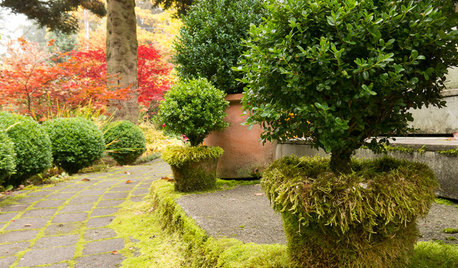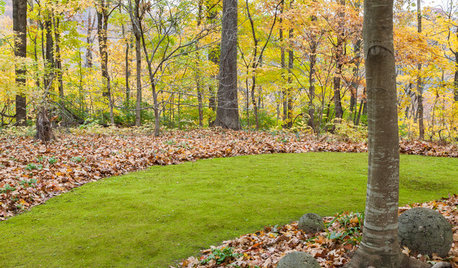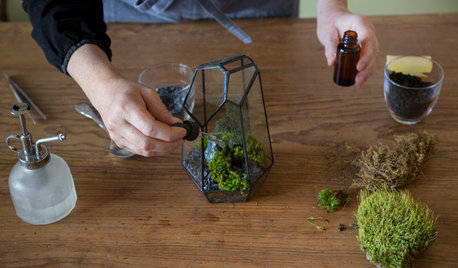Spanish Moss - getting rid of it
tryz
18 years ago
Featured Answer
Comments (37)
komi
18 years agoNigella
18 years agoRelated Professionals
Middle Island Landscape Architects & Landscape Designers · Otsego Landscape Architects & Landscape Designers · Wareham Landscape Architects & Landscape Designers · Willowick Landscape Architects & Landscape Designers · Alexandria Landscape Contractors · Cockeysville Landscape Contractors · Pompano Beach Landscape Contractors · Wanaque Landscape Contractors · Sun Valley Landscape Contractors · Boise Roofing & Gutters · Vista Park Roofing & Gutters · Billerica Decks, Patios & Outdoor Enclosures · Lake Arrowhead Decks, Patios & Outdoor Enclosures · Little Rock Decks, Patios & Outdoor Enclosures · Methuen Decks, Patios & Outdoor Enclosuresplantfreak
18 years agorhizo_1 (North AL) zone 7
18 years agoNigella
18 years agoRad3Dad
18 years agorhizo_1 (North AL) zone 7
18 years agojessay3
18 years agorhizo_1 (North AL) zone 7
18 years agogaryfla_gw
18 years agoplantfreak
18 years agogaryfla_gw
18 years agojohn1132
17 years agobrendan_of_bonsai
17 years agoaureliajulia
17 years agobrindize
16 years agoharrywitmore
16 years agomesu15
15 years agoiam216stitches
15 years agokidcrone_comcast_net
13 years agoFlaDiane_att_net
13 years agocobraguy2_verizon_net
13 years agobiuelady1_yahoo_com
13 years agojiltcl_tampabay_rr_com
13 years agoacicoria1_tampabay_rr_com
13 years agoredsunflower7_yahoo_com
12 years agoSteve1212
11 years agoGene ODonnell
8 years agogaryfla_gw
8 years agornfrankie99
8 years agodebbyabq
7 years agoJoyce Mikyska
7 years agoPKponder TX Z7B
7 years agopopaski1
6 years agoshamrock2228
6 years agopopaski1
6 years ago
Related Stories

EDIBLE GARDENSNatural Ways to Get Rid of Weeds in Your Garden
Use these techniques to help prevent the spread of weeds and to learn about your soil
Full Story
VACATION HOMESHouzz Tour: Moss-Covered Lakeside Cottage Now a Modern Marvel
A 1949 Michigan weekend cottage with a sunken roof gets a makeover that stays true to the house's humble roots
Full Story
SAVING WATERXeriscape Gardens: How to Get a Beautiful Landscape With Less Water
Conserve water and make gardening much easier with the xeriscape approach’s 7 principles
Full Story
LANDSCAPE DESIGNEvoke Mystery and History With Moss in the Garden
Go ahead, lie about age. Moss on garden statues, planters and pavers creates the beautifully deceptive look of time’s passing
Full Story
LANDSCAPE DESIGNMoss: Nature’s Carpet for the Garden
Learn how to grow and use this ancient and mysterious natural wonder for delightful texture in the landscape
Full Story
DIY PROJECTSHouzz DIY: Make a Mini Moss Sanctuary
This easy-to-assemble terrarium brings the joy of moss to your tabletop or shelf
Full Story
HOUSEPLANTSBaby Tears Mimics Moss for a Green Accent Indoors
This adaptable spreader thrives in water or soil, making it a terrific addition to containers and living walls
Full Story
ENTERTAININGHoliday Table Decor Sends a Welcoming Message
This nature-inspired holiday table combines Spanish moss, flameless candles, trinkets and personal notes
Full Story
REMODELING GUIDESGet What You Need From the House You Have
6 ways to rethink your house and get that extra living space you need now
Full Story
LANDSCAPE DESIGNGet Along With Less Lawn — Ideas to Save Water and Effort
Ditch the mower and lower your water bill while creating a feast for the eyes with diverse plantings and gathering places
Full StorySponsored
Columbus Design-Build, Kitchen & Bath Remodeling, Historic Renovations






jessay3